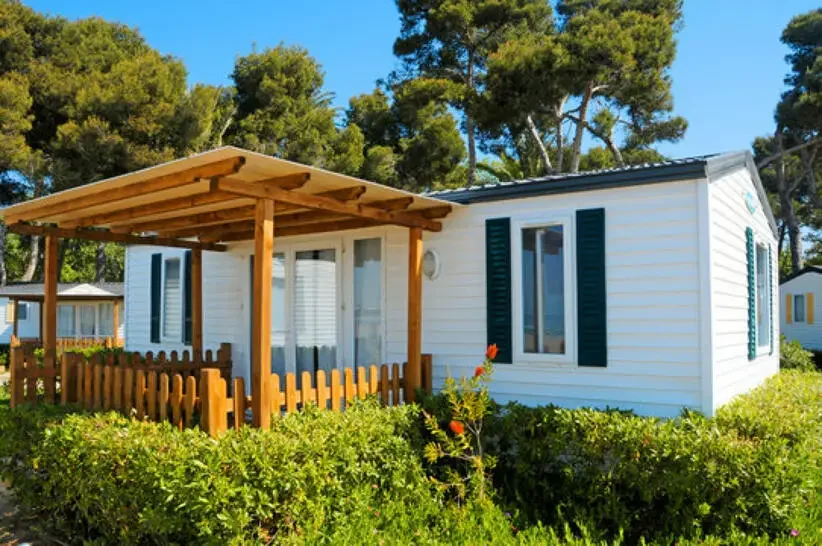Welcome to our blog post on mobile homes and their interior studs! Whether you’re a homeowner, a renter, or just someone curious about the construction of these unique dwellings, we’ve got all the information you need. Today, we’ll be diving into one specific aspect: how far apart are interior studs in a mobile home? So buckle up and get ready to explore this fascinating topic with us. Let’s go!
What is a mobile home?
Mobile homes, also known as manufactured homes, are a popular housing option that offers flexibility and affordability. These structures are constructed off-site in a factory setting before being transported to their final location. They come in various sizes and layouts, ranging from single-wide units to larger double-wide or even triple-wide configurations.
One of the defining features of mobile homes is their ability to be moved from one location to another. Unlike traditional stick-built houses, which are built on a permanent foundation, mobile homes can be relocated if desired. This mobility makes them an attractive choice for those who want the freedom to change their living environment without going through the process of selling or buying property.
In terms of construction, mobile homes often have lighter frames compared to traditional stick-built houses. The interior walls typically consist of thin vertical studs made of wood or metal that provide structural support and divide the space into separate rooms. But how far apart are these interior studs spaced?
Stay tuned as we delve deeper into this topic in our next section!
How far apart are interior studs in a mobile home?
When it comes to the construction of a mobile home, one important aspect to consider is the spacing between interior studs. The distance between these studs can vary depending on several factors, including the size and design of the mobile home.
In general, interior studs in a mobile home are typically spaced at 16 inches apart. This standard spacing allows for proper structural support and stability within the walls. However, there may be instances where stud spacing is slightly different based on specific building codes or manufacturer specifications.
Compared to traditional stick-built homes, which often have stud spacing at 24 inches apart, mobile homes tend to have closer together stud placement. This tighter spacing ensures that the walls can handle any movement during transportation or when settling into their permanent location.
Living in a mobile home offers numerous benefits, including affordability and flexibility. These homes are often more cost-effective than traditional houses and provide an opportunity for homeownership without breaking the bank. Additionally, their mobility allows residents to relocate if desired or necessary.
With proper maintenance and care, a well-constructed mobile home can provide comfortable living conditions for years to come. So whether you’re considering purchasing a new manufactured residence or currently reside in one, understanding how far apart interior studs are placed is essential knowledge for maintaining your space’s structural integrity
Mobile homes vs. traditional stick-built homes
When it comes to choosing a place to call home, there are countless options available. One decision that often arises is whether to go for a mobile home or a traditional stick-built home. Let’s explore the differences and benefits of each!
Let’s consider cost. Mobile homes tend to be more affordable than their stick-built counterparts. This can make them an attractive option for those looking to save money or live within a tighter budget.
Another advantage of mobile homes is their flexibility in terms of location. These structures are designed to be portable and can easily be moved from one place to another if desired. Stick-built homes, on the other hand, are typically fixed in one spot.
In terms of construction, mobile homes have interior studs spaced at regular intervals just like stick-built houses do. However, the spacing between these studs may vary depending on the specific design and manufacturer.
One key difference between mobile homes and traditional stick-built houses lies in their overall durability and longevity. While both types can provide comfortable living spaces, stick-built homes generally have longer lifespans due to superior construction methods and materials used.
It’s worth noting that modern advancements have greatly improved the quality and aesthetics of mobile home construction over the years. Today’s models offer various amenities such as spacious layouts, modern kitchens, and energy-efficient features.
Whether you choose a mobile home or a traditional stick-built house depends on your individual preferences, financial situation, and lifestyle needs. Both options come with their own set of advantages and considerations – it’s all about finding what works best for you!
The benefits of living in a mobile home
Living in a mobile home offers numerous advantages that make it an appealing choice for many individuals and families. Here are some of the key benefits:
1. Affordability: One of the most significant advantages of owning a mobile home is its affordability compared to traditional stick-built homes. Mobile homes generally have lower purchase prices, making them more accessible to a wider range of budgets.
2. Flexibility and mobility: As the name suggests, mobile homes are designed to be movable. This means that if you desire a change in scenery or need to relocate due to work or personal reasons, you can easily move your entire home without having to sell or leave it behind.
3. Lower utility costs: Mobile homes often feature energy-efficient designs with modern insulation materials and efficient heating/cooling systems. This results in lower monthly utility bills compared to larger, less energy-efficient houses.
4. Community amenities: Many mobile home parks offer various amenities such as swimming pools, playgrounds, clubhouse facilities, and community events for residents’ enjoyment. These shared spaces foster a sense of community and provide opportunities for socializing with neighbors.
5. Low maintenance requirements: Mobile homes typically require less maintenance than traditional houses due to their smaller size and simpler construction techniques. With fewer rooms and exterior surfaces to maintain, homeowners can save both time and money on upkeep tasks.
6. Customization options: Despite their compact size, mobile homes can still be customized according to individual preferences and needs by choosing from different floor plans, finishes, colors, appliances, etc., during the purchasing process.
7. Environmental friendliness: Many newer models of mobile homes incorporate eco-friendly features such as energy-saving appliances and sustainable building materials like recycled steel frames or low VOC (volatile organic compounds) paints that contribute positively towards reducing environmental impact.
8. Closer proximity to nature: Since many mobile home parks are located outside urban areas closer to nature reserves or scenic landscapes, residents can enjoy a more relaxed and peaceful lifestyle away from the




